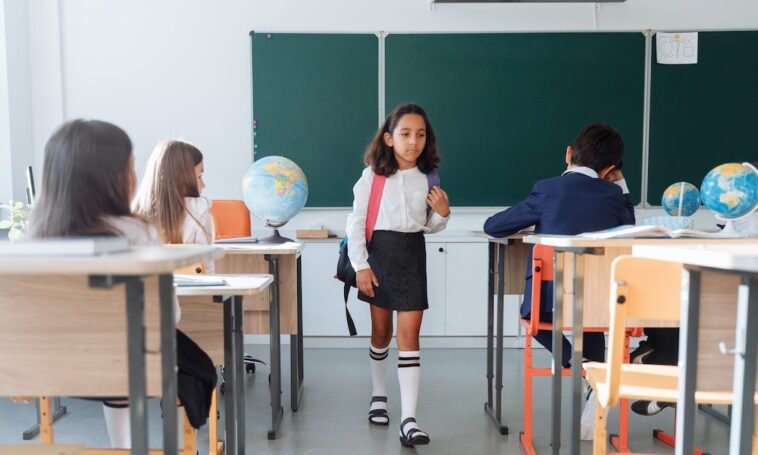Global education equity, Education is a fundamental right that should be accessible to all individuals, regardless of their background or geographical location. Unfortunately, educational inequalities persist worldwide, hindering the progress and potential of millions of learners. In recent years, Educational Technology (EdTech) has emerged as a powerful tool in promoting global education equity. By leveraging technology, EdTech provides opportunities for marginalized communities and addresses the challenges faced in traditional educational systems. This article explores five important roles of EdTech in promoting global education equity.
Read More: 5 Important benefits of game-based learning in EdTech
Explore the Contents
Role 1: Access to Quality Education
Bridging the Education Gap
Global education equity, EdTech plays a crucial role in bridging the education gap by providing access to quality educational resources to students who lack adequate learning opportunities. Through online platforms and digital content, students can access a wide range of educational materials, including textbooks, videos, interactive modules, and educational games. This enables learners from underserved communities to acquire knowledge and skills that were previously out of their reach.
Removing Geographic Barriers
Global education equity, One of the major challenges in achieving education equity is overcoming geographic barriers. Remote and rural areas often lack educational infrastructure and qualified teachers. EdTech solutions, such as online learning platforms and virtual classrooms, enable students in these areas to connect with teachers and resources from anywhere in the world. This eliminates the limitations imposed by physical distance and ensures that every learner has access to quality education.

Role 2: Personalized Learning
Catering to Individual Needs
EdTech facilitates personalized learning, which acknowledges the diverse learning needs and styles of students. Adaptive learning platforms use data-driven algorithms to tailor educational content and activities based on individual strengths, weaknesses, and progress. This approach ensures that each student receives targeted instruction, maximizing their learning outcomes.
Adaptive Learning Technologies
With the help of adaptive learning technologies, students can learn at their own pace and focus on areas where they require additional support. Intelligent tutoring systems and virtual mentors provide personalized feedback and guidance, allowing students to develop a deep understanding of complex concepts. By catering to individual needs, EdTech promotes inclusivity and helps close the achievement gap.
Role 3: Enhancing Teacher-Student Collaboration
Facilitating Communication
Global education equity, EdTech tools enhance communication and collaboration between teachers and students. Online platforms and messaging apps enable real-time interaction, allowing students to seek clarification and receive feedback from their teachers. This instant access to support fosters a supportive learning environment and encourages active engagement.
Real-time Feedback
EdTech solutions provide teachers with real-time insights into student progress and understanding. Through data analytics and learning management systems, teachers can monitor individual performance, identify areas of improvement, and tailor their instructional strategies accordingly. This continuous feedback loop enhances teaching effectiveness and helps address learning gaps promptly.
Role 4: Empowering Teachers
Professional Development Opportunities
Global education equity, EdTech empowers teachers by offering professional development opportunities. Online courses, webinars, and virtual conferences enable educators to expand their knowledge, learn new teaching methods, and stay updated with the latest educational trends. By investing in teacher training and support, EdTech strengthens the overall quality of education and empowers teachers to deliver impactful instruction.
Resource Sharing and Lesson Planning
EdTech platforms facilitate resource sharing and collaborative lesson planning among teachers. Educators can access a vast repository of teaching materials, share their own resources, and collaborate with colleagues worldwide. This exchange of ideas and best practices promotes innovation and ensures that teachers have access to a wide range of high-quality resources, regardless of their location.

Role 5: Expanding Learning Opportunities
Supplementing Traditional Classroom Instruction
EdTech complements traditional classroom instruction by providing additional learning opportunities. Blended learning models combine face-to-face teaching with online resources, allowing students to reinforce their understanding and explore topics in greater depth. This flexibility enables educators to cater to diverse learning styles and ensures that students can access educational content beyond the constraints of the classroom.
Lifelong Learning
EdTech promotes lifelong learning by offering flexible and accessible education options for individuals of all ages. Online courses, Massive Open Online Courses (MOOCs), and e-learning platforms enable continuous skill development and professional growth. This empowers individuals to adapt to evolving job market requirements and pursue lifelong learning journeys, irrespective of their location or circumstances.
Conclusion
EdTech plays a vital role in promoting global education equity by addressing barriers, providing personalized learning experiences, facilitating teacher-student collaboration, empowering educators, and expanding learning opportunities. By harnessing the potential of technology, EdTech has the power to bridge educational gaps and ensure that every learner has access to quality education. Embracing EdTech as a catalyst for change can create a more equitable and inclusive education landscape, enabling individuals worldwide to unlock their full potential.
Read More: Top 5 Impact of EdTech on teacher workload and job satisfaction

FAQs
How can EdTech address educational inequalities?
EdTech addresses educational inequalities by providing access to quality educational resources, removing geographic barriers, and offering personalized learning experiences that cater to individual needs.
What are some challenges of implementing EdTech for global education equity?
Challenges of implementing EdTech for global education equity include infrastructure limitations, lack of internet connectivity, ensuring digital literacy among teachers and students, and overcoming language and cultural barriers.
How does personalized learning through EdTech benefit students?
Personalized learning through EdTech benefits students by catering to their individual needs, allowing them to learn at their own pace, providing targeted instruction, and fostering a deeper understanding of concepts.
What are the advantages of teacher-student collaboration facilitated by EdTech?
Teacher-student collaboration facilitated by EdTech enhances communication, enables real-time feedback, promotes active engagement, and empowers teachers to monitor student progress and adapt their teaching strategies accordingly.
How can EdTech support lifelong learning?
EdTech supports lifelong learning by offering flexible and accessible education options, such as online courses, MOOCs, and e-learning platforms, which allow individuals to continuously develop their skills and pursue learning opportunities throughout their lives.



